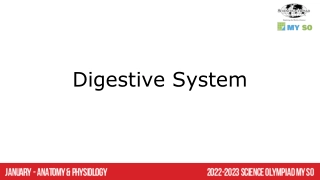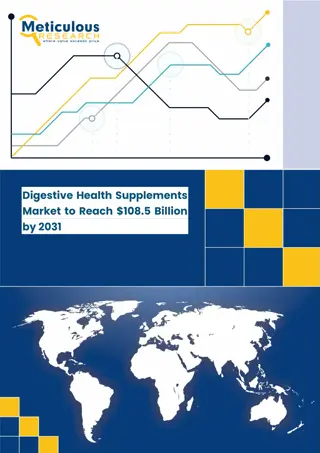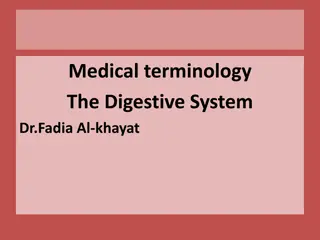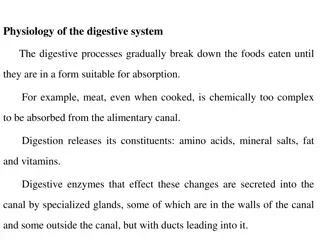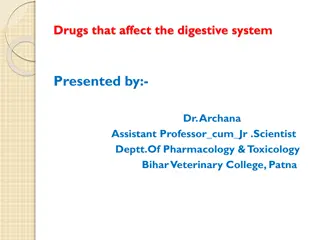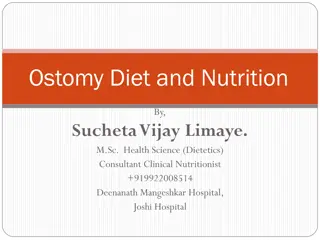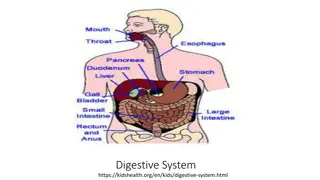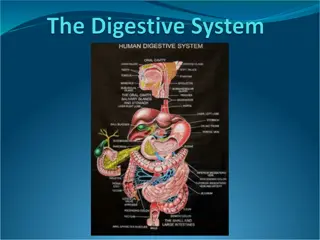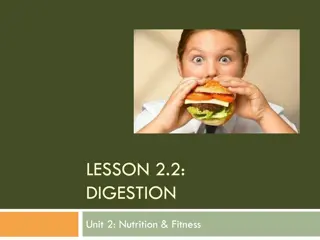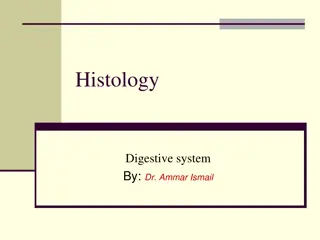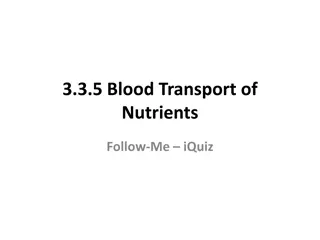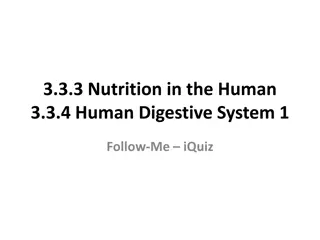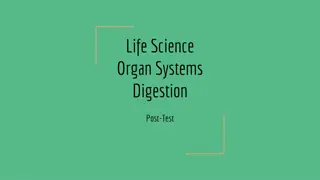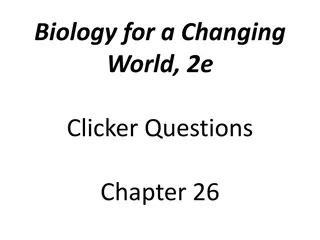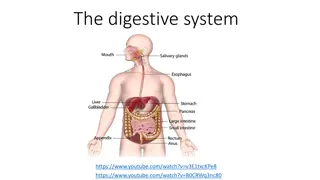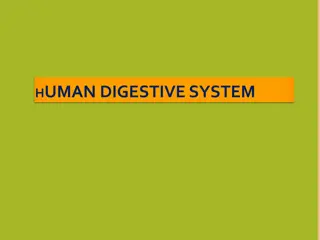The Digestive System of Worms: Functions and Structure
The digestive system of a worm plays a crucial role in converting its food intake into energy. It consists of various parts such as the mouth, crop, gizzard, esophagus, intestine, and anus. The mouth serves as the entry point for food intake, leading to further digestion through the other components of the system. Understanding the structure and functions of the digestive system in worms is essential to comprehend how these organisms process nutrients effectively.
Download Presentation

Please find below an Image/Link to download the presentation.
The content on the website is provided AS IS for your information and personal use only. It may not be sold, licensed, or shared on other websites without obtaining consent from the author. Download presentation by click this link. If you encounter any issues during the download, it is possible that the publisher has removed the file from their server.
E N D
Presentation Transcript
Digestive System: Worm It is the job of the Digestive System to convert an organism s food intake into useful energy for use in its everyday life. The earthworm has a mouth, crop, gizzard, esophagus, intestine, and anus. Mouth: Serves the basic function of a gateway between the worm and its surroundings. Esophagus: Connects the mouth to the crop. Here are three parts of the earthworm s digestive system, the crop, gizzard, and intestine. Crop: Acts as a storage tank. Holds food and slowly releases it to the gizzard. Check out our earthworm digestive system demonstration: different sized and colored balls represent different types of food. Watch as the crop holds food for the gizzard to grind; then watch the intestine separate the food. Gizzard: Includes tiny particles of sand. Muscles grind food into smaller pieces. Intestine: Absorbs nutrients from the ground-up food into the body for use by the circulatory system. Contains tiny villa, small finger- like projections that increase the surface area for absorption. Anus: Excretes undigested food and waste back into the worm s surroundings. For more information, check out www.rci.rutgers.edu/~dougproj/earthworm.htm
Digestive System: Cow The cow s digestive system is more complex than the earthworm s. It includes a mouth, a four-chambered stomach, and both a small and large intestine. Mouth: As the food is chewed, saliva is added to soften it. The saliva is slightly basic, acting as a buffer for the stomach. Rumen/Reticulum: The first two chambers use enzymes and microorganisms to break down food. Omasum: This third chamber physically squeezes food particles and many acids are extracted for use in the body. Here are the major parts of the cow s digestive system, drawn in rough relation to their actual positions. Abomasum: The final chamber is similar to a human stomach; the pH is very low, and the acid breaks food down to a molecular level. Small Intestine: Consists of the duodenum, the jejunum, and ileum. Absorbs nutrients into the bloodstream and converts carbohydrates to simple sugars. Check out our cow digestive system demonstration: different sized and colored balls represent different types of food. Watch as smaller particles are separated first, followed by successively larger particles. Large Intestine: Consists of the cecum, colon, rectum, and anus. Absorbs nutrients into the bloodstream if the cow hasn t had much to eat; otherwise just absorbs water. E. coli bacteria also live here to aid the digestive process, but they can sometimes For more information, check out http://www.extension.umn.edu/distribution/lives tocksystems/components/DI0469-02.html
Digestive System: Human The human s digestive system is even more complex than the cow s. It consists of the gastrointestinal tract, which handles the digestion itself, and accessory glands, which produce enzymes. 2. Mouth: Teeth grind food down to begin mechanical digestion. Amylase, an enzyme in saliva, begins digestion of carbohydrates. 1. pharynx (throat) 2. mouth (teeth) 3. tongue 9. Esophagus: Food passes from the mouth to the stomach through this. 4. stomach 5. pancreas 4. Stomach: 6. small intestine Strong hydrochloric acid begins chemical digestion of protein while the stomach churning continues mechanical digestion. 7. rectum 8. salivary glands 9. esophagus 6. Small Intestine: Chemical digestion of proteins and fats is completed, and soluble nutrients are absorbed using villa in the intestine wall. 10. liver 11. gall bladder 12. large intestine 12. Large Intestine: 13. appendix Water is separated from indigestible materials and absorbed into the body. Waste is stored in the rectum and egested through the anus (14). 14. anus Other Components: Check out our human digestive system demonstration: different sized and colored balls represent different types of food. Watch as smaller particles are separated first, followed by successively larger particles. Complimenting the gastrointestinal tract, accessory glands assist digestion. Salivary glands produce saliva for use in the mouth, the liver produces bile for use in the intestine to emulsify fats, the pancreas produces a mixture of digestive enzymes to aid in the digestion of proteins and fats. For more information, check out : http://www.borg.com/~lubehawk/hdigsys.htm
Circulatory System Our circulatory system deliver nutrients form the food we eat to our cells. Typically when we think of the circulatory system we think of blood circulating in veins and arteries in the body. Blood is made up of red blood cells, and white blood cells, platelets, and proteins. Red Blood Cells Account for 42% of the volume of blood in humans Measured as your hemoglobin count. Anemia is characterized by low hemoglobin count Carry oxygen to cell Platelets Proteins White Blood Cells Account for <1% of the volume of blood in humans Can leave the closed system Are immune cells to fight disease and infection Parts of cells, usually red blood cells Important in clotting Maintain a pressure change across capillaries to help move nutrients Mostly made in the liver Albumin Globulins (many types) Fibrinogen There are two types of circulatory systems that are present in most creatures. Open circulatory system Closed circulatory system Common to mollusks and arthropods. Blood is pumped into a hemocoel with the blood diffusing back between cells Blood is pumped by a heart into the body cavities, where tissues are surrounded by the blood. Vertebrates, and a few invertebrates The blood closed at all times within vessels of different size and wall thickness. Blood is pumped by a heart through vessels, and does not normally fill body cavities. www.gsu.edu/~bioasx/ closeopen.html
Comparing How Animals get Food A Bumble Bee Birds Sponge A Perch A Flatworm Hearts Vessels A Snail Vessels An Earthworm
Neurons Neurons are the type of cells that make up the brain and the nervous system The myelin sheath is like the insulation on wire and prevents the signal from short- circuiting and moves the signal quickly down the axon There are three different types of nerves: Sensory send signals of the 5 senses Interneurons carry signals in the brain and spinal cord Efferent nerves carry signals from the spinal cord to the muscles
HOW FOOD IS DIGESTED Peristalsis Muscles directly behind the food contract, pushing the food forward Muscles in front of the food relax Food moves down, then start the process over again at the new location Enzymes Enzymes are catalysts: speed up a reaction Activation energy (Ea) = the energy needed to start a reaction Break initial bonds, etc. Blue is an uncatalyzed reaction Large Ea to overcome, so difficult to do Red is the same reaction, but with a catalyst present Reduced Ea, so reaction is easier to do Villi and microvilli The villi protrude from the intestinal lining, and are made up of enterocytes. Enterocytes (specialized epithelial cells that absorb nutrients) contain tiny protrusions called microvilli. Villi and microvilli increase surface area (and thus absorption of nutrients) by 600x!
Inside and Out What types of skeletons are there? How do they differ? What kinds of organisms use each type? Hydrostatic Skeleton A fluid-filled gastrovascular cavity lined with both cylindrical and longitudinal muscles. Provides support to the body and resistance to the contraction of muscles Examples: worms, squid, hydra Exoskeleton An external skeleton composed of either calcium carbonate or a protein called chitin Provides protection from predators and prevents tissues from drying out. As the organism ages, the exoskeleton must be periodically shed and regrown. Examples:insects, coral, mollusks Endoskeleton An internal skeleton composed of cartilage and bone. As the organism ages, the bones lengthen and thicken. The large skeletal frame supports the body against the pull of gravity and protects vital organs. Examples: humans, snakes, whales Diagrams taken from: http:www.emc.maricopa.edu/faculty/farabee/BIOBK/BioBookMUSSKEL.htm
MUSCULAR SYSTEM Muscles only know how to contract! Muscles can only extend passively, by relaxing. Skeletal Muscles Actin Myosin In all types of muscle the heads of the actin walk on the myosin path to cause contraction. Contracted Relaxed Muscles are able to cause movement by working with the skeleton to create levers. E = Energy F = Fulcrum R = Resistance


